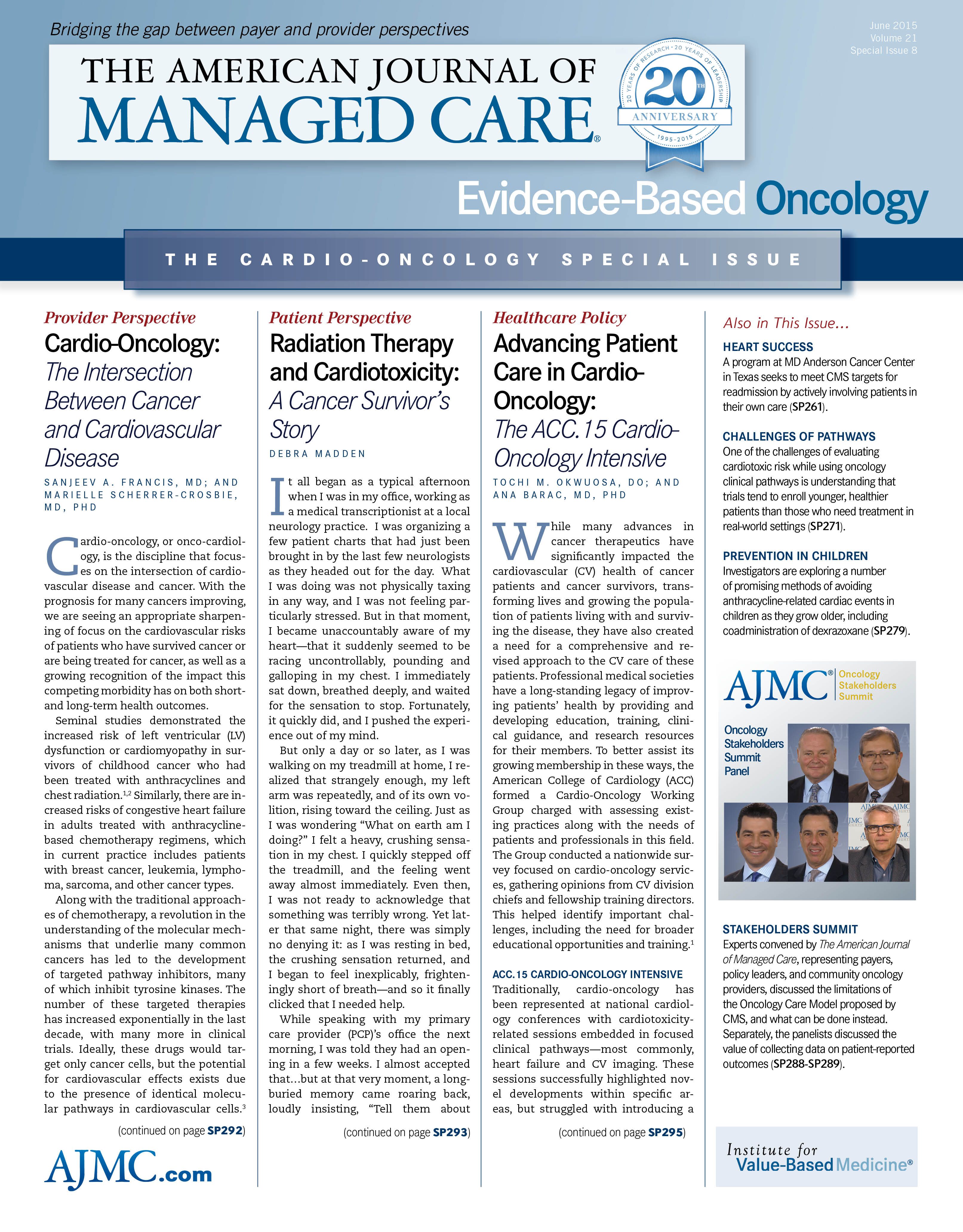- Center on Health Equity & Access
- Clinical
- Health Care Cost
- Health Care Delivery
- Insurance
- Policy
- Technology
- Value-Based Care
Drop-off in Prostate Screening Stirs Controversy
Data represented May 18, 2015, at the American Urological Association annual meeting in New Orleans, certainly grabbed headlines.
To Vanderbilt University’s Sam Chang, MD, the drop-off in prostate cancer screening since 2012 represents a “chilling effect.” To Otis Brawley, MD, chief medical officer for the American Cancer Society, the change represents more conscientious conversations between doctors and patients.
But whatever one’s point of view, the data represented May 18, 2015, at the American Urological Association annual meeting in New Orleans, certainly grabbed headlines: according to a study presented by Ryan Werntz, MD, the controversial 2012 guideline change from the US Preventive Services Task Force (USPSTF) has triggered a profound shift in clinical practice.1 Werntz, a urologic resident at Oregon Health & Science University (OHSU), found that the overall rate of prostate-specific antigen (PSA) testing had dropped 50% among primary care physicians at OHSU since the guideline change.
According to a report from the meeting, published by OncLive, the decline was most significant among men aged 50 to 70 years a group highly likely to benefit from testing.2
Werntz and others echoed concerns that were heard immediately on May 2012, when the USPSTF stunned urologists and the cancer prevention community by giving the PSA test a D rating, saying the harms outweighed the benefits.3 Urologists and specialists in prostate cancer expressed concern at the time that the recommendation would lead to a drop-off in screening, after the rise of PSA testing had saved lives. “If you look back before PSA was a big part of prostate cancer screening, 20% to 25% of men would often first see a physician with back pain and be subsequently diagnosed with metastatic disease,” Werntz told Oncology Live.2
The USPSTF’s 2012 change was rooted in the belief that widespread PSA testing was causing too many men to be biopsied and over-treated for slow-growing cancers that posed no immediate risk. For too many, this caused unnecessary complications such as incontinence and impotence. But supporters of PSA testing say it has saved lives.4
In March 2014, Peter R. Carroll, MD, MPH, of the University of California at San Francisco, in presenting updated prostate cancer screening guidelines at the 19th Annual Conference of the National Comprehensive Cancer Network (NCCN) in direct response to the USPSTF, said: “We achieved a 45% reduction in mortality in prostate cancer in the United States, in contrast with an increase worldwide. Yet, the USPSTF gives it a D.”5
NCCN recommended a middle ground for PSA testing in which screening would be less frequent and be guided by risk factors. Indications for biopsies would be driven by “highly suspicious” digital rectal exams that followed an elevated PSA result.
The American Cancer Society says on its website that the USPSTF guideline differs from its own recommendation, which calls for individual decisions based on understanding of risks.6 Brawley, who at the time of the 2012 recommendation was skeptical of how much screening would decline, told HealthDay that he sees a trend away from “thoughtless” to more focused screening, “with informed decision-making going on between doctor and patient.”7 Werntz’ figures from OHSU showed that PSA testing in new patients 40 years or older declined, from 14% in the years prior to the recommendation to 7% in the years that followed.1References
1. Werntz R, Martinez-Acevedo AC, Conlin MJ, et al. Trends in PSA utilization by primary care physicians: impact of the USPSTF recommendation. Presented at the American Urological Association Annual Meeting; New Orleans, Louisiana; May 18, 2015. Abstract PD44-02.
2. Berberabe T. Chilling effect seen after USPSTF recommends against routine PSA testing. OncLive website. http://www.onclive.com/conference-coverage/aua-2015/Chilling-Effect-Seen-After-USPSTF-Recommends-Against-Routine-PSA-Testing. Published May 18, 2015. Accessed May 19, 2015.
3. Moyer VA; US Preventive Services Task Force. Screening for prostate cancer: US Preventive Services Task Force recommendation statement. Ann Intern Med. 2012;157(2):120-134.
4. Caffrey MK. A test to prevent repeat biopsies? perhaps, if the bar of “clinical utlity” can be met. Am J Manag Care. 2014;20(SP2):SP30-SP31.
5. Caffrey MK. New NCCN prostate cancer screening guidelines aim for middle ground. Am J Manag Care. 2014;20(SP7):SP210-SP212.
6. Simon S. Task force recommends against routine prostate cancer screening. American Cancer Society website. http://www.cancer.org/cancer/news/task-force-recommends-against-routine-prostate-cancer-screenin. Published May 21, 2012. Accessed May 19, 2015.
7. Thompson D. Prostate cancer testing drops off after controversial guidelines. HealthDay website. http://www.19actionnews.com/story/29090974/prostate-cancer-testing-drops-off-after-controversial-guidelines. Published May 18, 2015. Accessed May 19, 2015.


